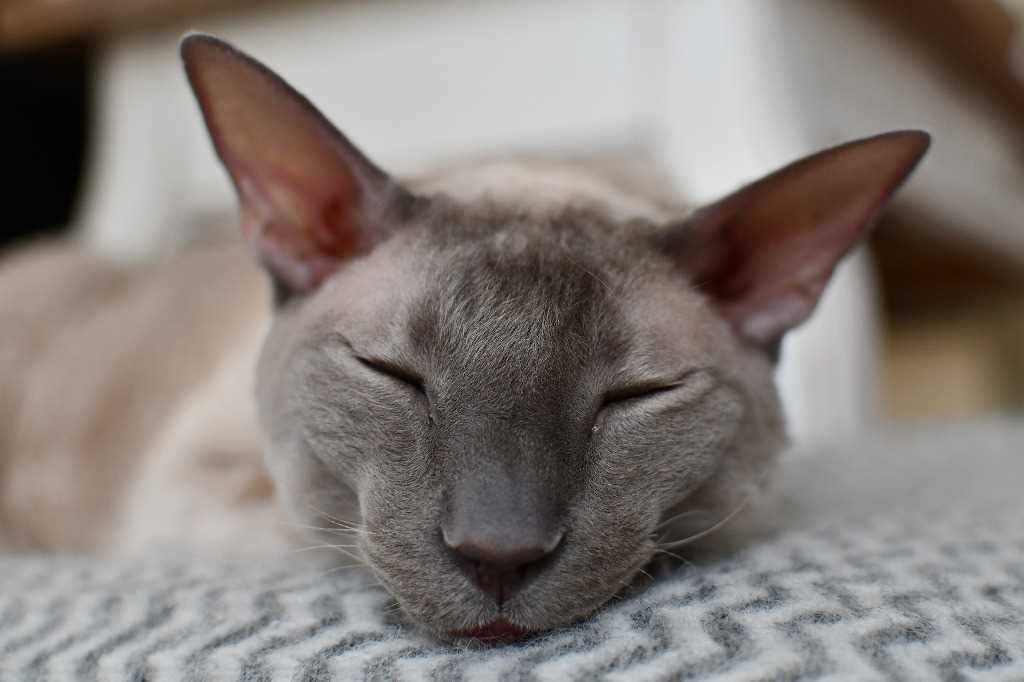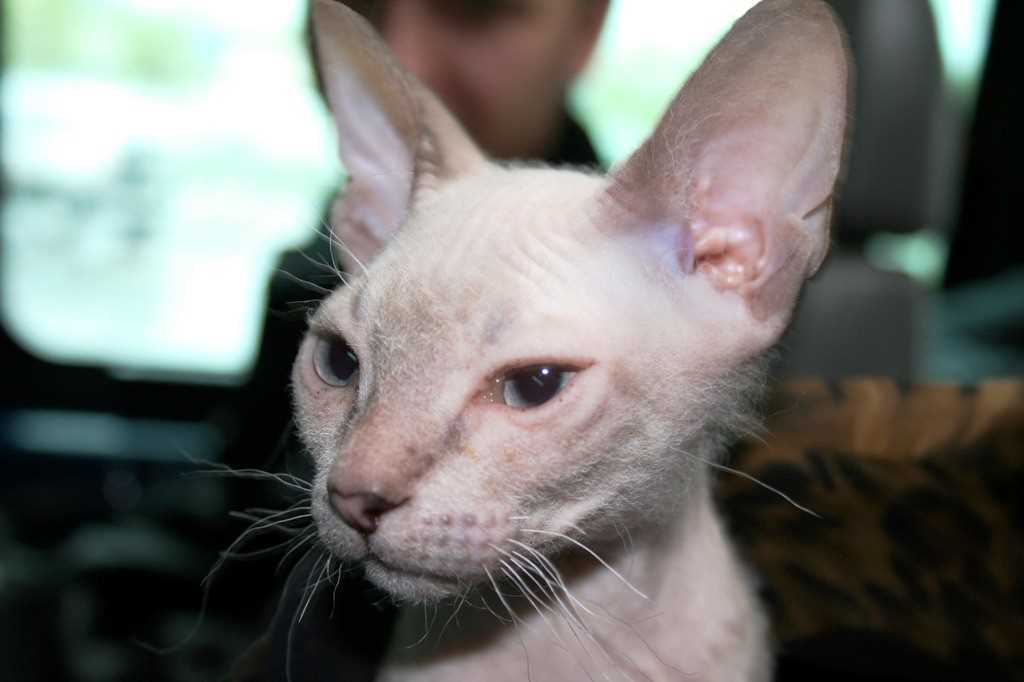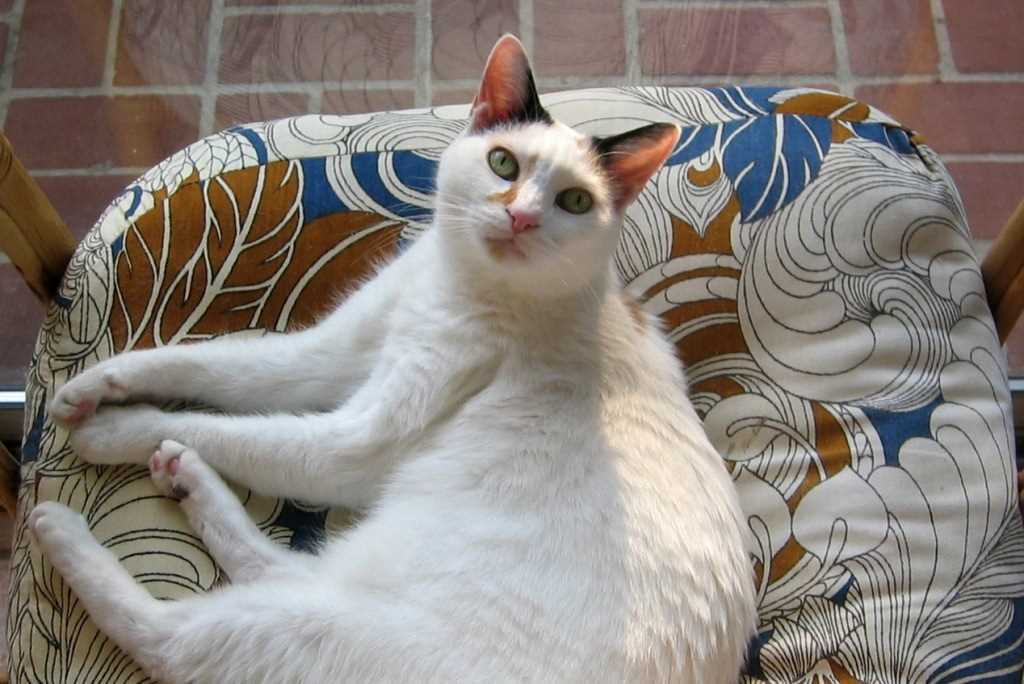The breed of the Cornish Rex cat is rather young, it is dated 1950 the birth of the first specimen fruit of a spontaneous mutation for the coupling of a calico cat, that is tricolour and unknown father. This happened in Cornwall and this kitten was called Kallibunker. It was the only one of the litter, or rather the only one, as it was a kitten, to have a curly coat. The name of the Cornish Rex was chosen later: Cornish because of its birthplace, Rex because of the resemblance of its coat to that of a rabbit called Astrex.
The calico cat, a couple of years later gave birth to two more short and curly haired males. A descendant of one of the males was crossbred with British Shorthair and Burmese, thus varying the colour and creating the new English Cornish. In 1957 a descendant of the calico cat was imported to America, where two breeders created the American Cornish by crossing the cat with Siamesio and Orientali.
During the selection they tried to breed Cornish with Devon, but all the kittens turned out to be smooth haired, proving that the breeds are the result of two different genetic mutations. Continuing the selection we find crosses with other breeds with light bones and this is the reason for the elegance of this small feline. And because of its stylised appearance, it is comparable to greyhounds, as these cats also have the same shape in their abdomen.
Character of the Cornish Rex cat
It has a very affectionate and playful character, very intelligent, constantly seeking the attention and cuddles of people. It becomes very attached to a member of the family and is willing to do anything to spend a little time with its owner, even going out on a leash. His curious nature makes him interested in everything that happens in the family. He likes to play and climb in high places, but although athletic and agile, he also likes to stay in comfortable and quiet places. It is therefore the classic cat that adapts very well to flat life.
With children it is particularly protective and never tires of playing. It is a cat that suffers from loneliness, so it is not suitable for those who are away from home for a long time, and for this reason it accepts the company of other cats and even dogs, but it has a dominant disposition and needs to be socialised from an early age in order not to give free rein to this tendency.
Another curious characteristic of many of these cats is that they like to rise up on their hind legs to take their owner’s hands and bring them to their head to be cuddled. With strangers, it is curious and, if you just respect its pace, it will make friends easily. It emits various types of meows and also other noises that can become annoying if it is not educated from an early age. If it notices that its meowing attracts attention, it will never stop meowing, as it is a cat that likes to be noticed.
Appearance of the Cornish Rex cat
The aspect of the Cornish Rex cat is very particular; first of all the hair, short, thick and curly, even the whiskers are curled. Its structure that makes it look like a greyhound, its big ears, are all characteristics that give it a unique appearance.
Its body is of medium size, elegant, strong and muscular, while its bone structure is delicate. The legs are long, straight and slender and the tail is long, fine and thin, covered with wavy fur.
The head is wedge-shaped, longer than wide, with large oval eyes of a bright, pure colour in accordance with the coat. The ears are distinctive, very large and rounded at the tips, covered with a fine coat.
The coat, as already mentioned is short, very thick and soft, curled, particularly on the back and sides. As far as the colours of the coat are concerned, all colours are admitted, the most common, however, being black and blue without white spots and tiger spots.
Care and health of the Cornish Rex cat
This cat has a life expectancy of 12 to 15 years. As a constitution it is a healthy and strong cat and there are no particular pathologies to report, apart from those common to many cat breeds.
As far as grooming is concerned, it is a cat that requires almost no care. It does not lose any hair, not even during the moulting period, and a wipe with a chamois skin is enough to make it particularly shiny and wavy. It would be a good idea to get it used to having a bath from an early age, at least two or three times a year.
It fears the cold very much, so you should avoid exposing it to draughts. It is also advisable to pay particular attention to its diet, as this kitten tends to eat a lot, and even if it is active it may have problems with obesity.


